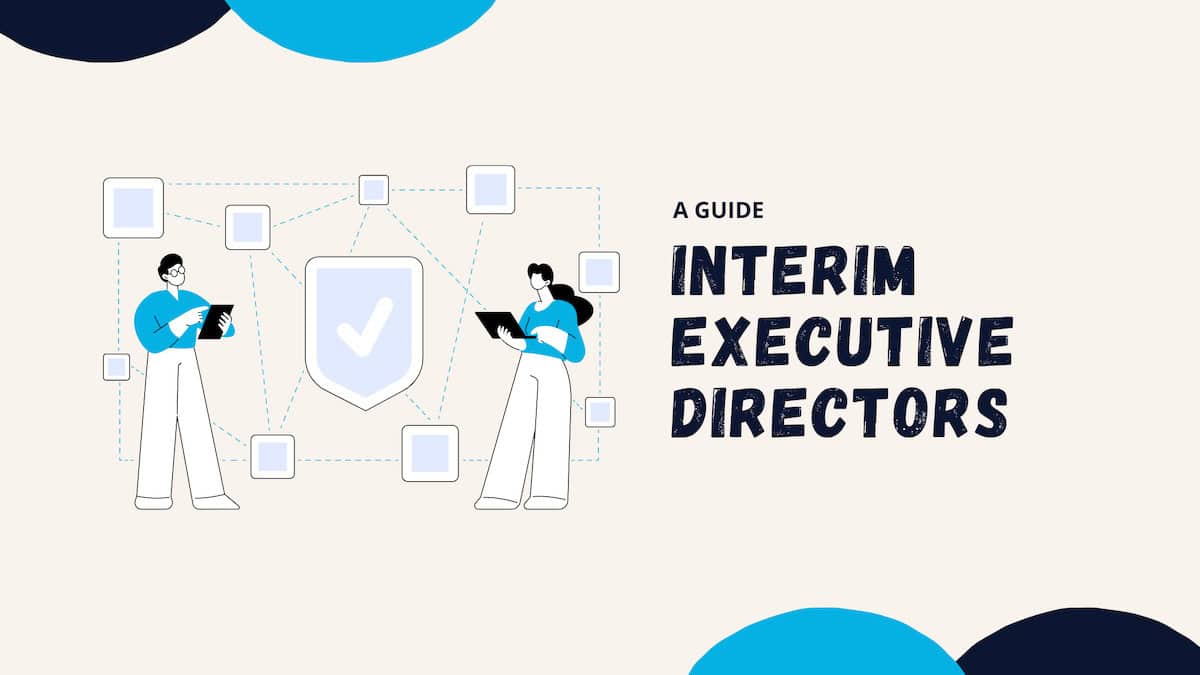The role of an Interim Executive Director is both challenging and crucial. It involves steering an organization through a period of transition, maintaining stability, and laying the groundwork for future leadership. Interim Executive Directors are often called upon during times of significant change, whether due to the sudden departure of a predecessor, organizational restructuring, or other unforeseen circumstances.
Their ability to manage these transitions effectively can make a profound impact on the organization’s long-term success and resilience.
A survey by the Association of Interim Executives found that 67% of organizations have used interim leaders at some point, with 83% reporting that interim leaders met or exceeded their expectations (Association of Interim Executives).
Additionally, a study by the Nonprofit Leadership Alliance indicated that nonprofits that employed Interim Executive Directors during transitions had a higher rate of successful leadership placements within 12 months compared to those that did not use interim leadership (Nonprofit Leadership Alliance).
In this guide, we will explore some best practices for ensuring a smooth leadership transition, including how to assess the organization’s immediate needs and establish clear priorities.
We’ll delve into key areas to focus on during the interim period, such as maintaining operational continuity, addressing any existing challenges, and initiating necessary improvements.
Additionally, we will discuss strategies for building trust with staff and stakeholders, ensuring that everyone feels supported and confident during this period of change.

Best Practices for a Smooth Leadership Transition
Navigating a leadership transition can be a complex and demanding task, but implementing best practices can help ensure a smooth and successful process. The interim executive director plays a crucial role in assessing the organization’s immediate needs, establishing clear priorities, and maintaining operational continuity.
By focusing on these key areas, the interim leader can stabilize the organization and set the stage for future success. This section will delve into practical strategies to manage the transition effectively and provide a strong foundation for the incoming permanent leader.
Assess Immediate Needs:
• Initial Assessment: Start by conducting a comprehensive evaluation of the organization’s current state. This involves reviewing financial records, understanding ongoing projects, and assessing staff morale and capacity.
• Identify Urgent Issues: Pinpoint any immediate challenges that need to be addressed. This could include financial shortfalls, critical vacancies, or pressing operational inefficiencies.
• Set Short-term Goals: Based on the assessment, establish short-term objectives that can be achieved quickly to stabilize the organization and build momentum for longer-term initiatives.
Establish Clear Priorities:
• Define Objectives: Work with the board and senior management to outline clear, strategic priorities that align with the organization’s mission and vision.
• Communicate Priorities: Ensure that these priorities are communicated effectively to all staff and stakeholders to provide a clear roadmap for the interim period.
• Monitor Progress: Regularly review progress towards these priorities, adjusting plans as needed to stay on track and address any new issues that arise.
Maintain Operational Continuity:
• Keep the Lights On: Focus on ensuring that all essential functions and services continue without disruption. This might involve stepping into key roles or redistributing responsibilities temporarily.
• Support Staff: Provide the necessary support and resources to staff to enable them to perform their roles effectively during the transition.
• Avoid Major Changes: Unless absolutely necessary, avoid making significant changes to operations or staffing that could destabilize the organization further.
Key Areas to Focus On During the Interim Period
During the interim period, there are several critical areas that require focused attention to ensure the organization remains stable and effective. Financial stability, strategic planning, and staff morale and engagement are essential components that must be managed carefully.
By addressing these key areas, the interim executive director can not only keep the organization on track but also position it for future growth and development. This section will explore each of these areas in detail, providing actionable insights and strategies to guide the interim leader through this transitional phase.
Financial Stability:
• Review Financial Health: Conduct a thorough review of the organization’s financial statements, budgets, and cash flow to understand its financial position.
• Cost Management: Identify areas where costs can be managed or reduced without compromising essential services or staff well-being.
• Revenue Generation: Explore opportunities for new revenue streams or fundraising initiatives to ensure financial sustainability.
Strategic Planning:
• Long-term Vision: Collaborate with the board to revisit or develop a strategic plan that aligns with the organization’s mission and long-term goals.
• Implementation Roadmap: Create a detailed implementation plan that outlines specific actions, timelines, and responsibilities to achieve strategic objectives.
• Engage Stakeholders: Involve key stakeholders in the strategic planning process to ensure buy-in and support for the plan.
Staff Morale and Engagement:
• Regular Communication: Maintain open lines of communication with staff, providing updates on the transition process and any relevant changes.
• Recognize Contributions: Acknowledge and celebrate the efforts and achievements of staff to boost morale and maintain engagement.
• Provide Support: Offer professional development opportunities and resources to help staff navigate the transition and continue to grow in their roles.
Get our checklist of the best free nonprofit tools of 2024 sent directly to your inbox
Strategies for Building Trust with Staff and Stakeholders
Building trust with staff and stakeholders is paramount during any period of leadership transition. An interim executive director must prioritize open communication, active listening, and visible leadership to foster a sense of stability and confidence.
Trust is the foundation upon which successful transitions are built, and it ensures that the organization can continue to operate effectively despite changes in leadership.
This section will outline essential strategies for cultivating trust, engaging with staff and stakeholders, and demonstrating leadership that inspires confidence and collaboration.
Open Communication:
• Transparency: Be transparent about the challenges and opportunities facing the organization. This builds trust and ensures that everyone is on the same page.
• Regular Updates: Provide regular updates on the transition process, progress towards goals, and any significant developments.
• Two-way Communication: Encourage feedback and questions from staff and stakeholders, showing that their input is valued and considered.
Active Listening:
• Engage with Empathy: Take the time to listen to the concerns and ideas of staff and stakeholders, demonstrating empathy and understanding.
• Address Concerns: Actively work to address any concerns or issues that are raised, providing solutions or explanations where possible.
• Foster Inclusion: Create opportunities for staff and stakeholders to be involved in decision-making processes, fostering a sense of ownership and inclusion.
Visible Leadership:
• Be Present: Make a conscious effort to be visible and accessible within the organization, whether through regular meetings, site visits, or informal interactions.
• Lead by Example: Demonstrate the values and behaviors that you expect from others, setting a positive example for the organization.
• Build Relationships: Take the time to build strong, positive relationships with key staff and stakeholders, laying the foundation for trust and collaboration.
















